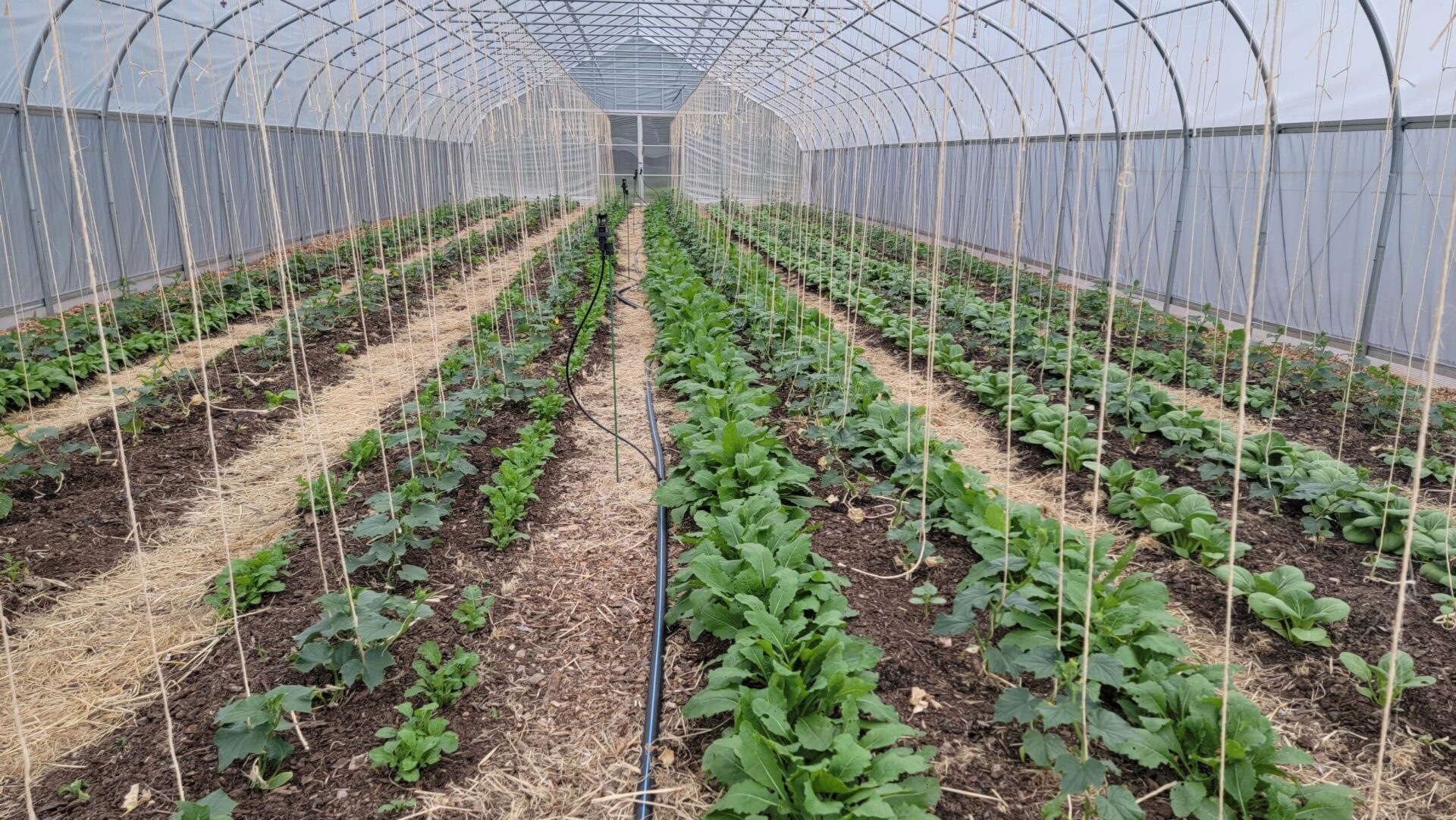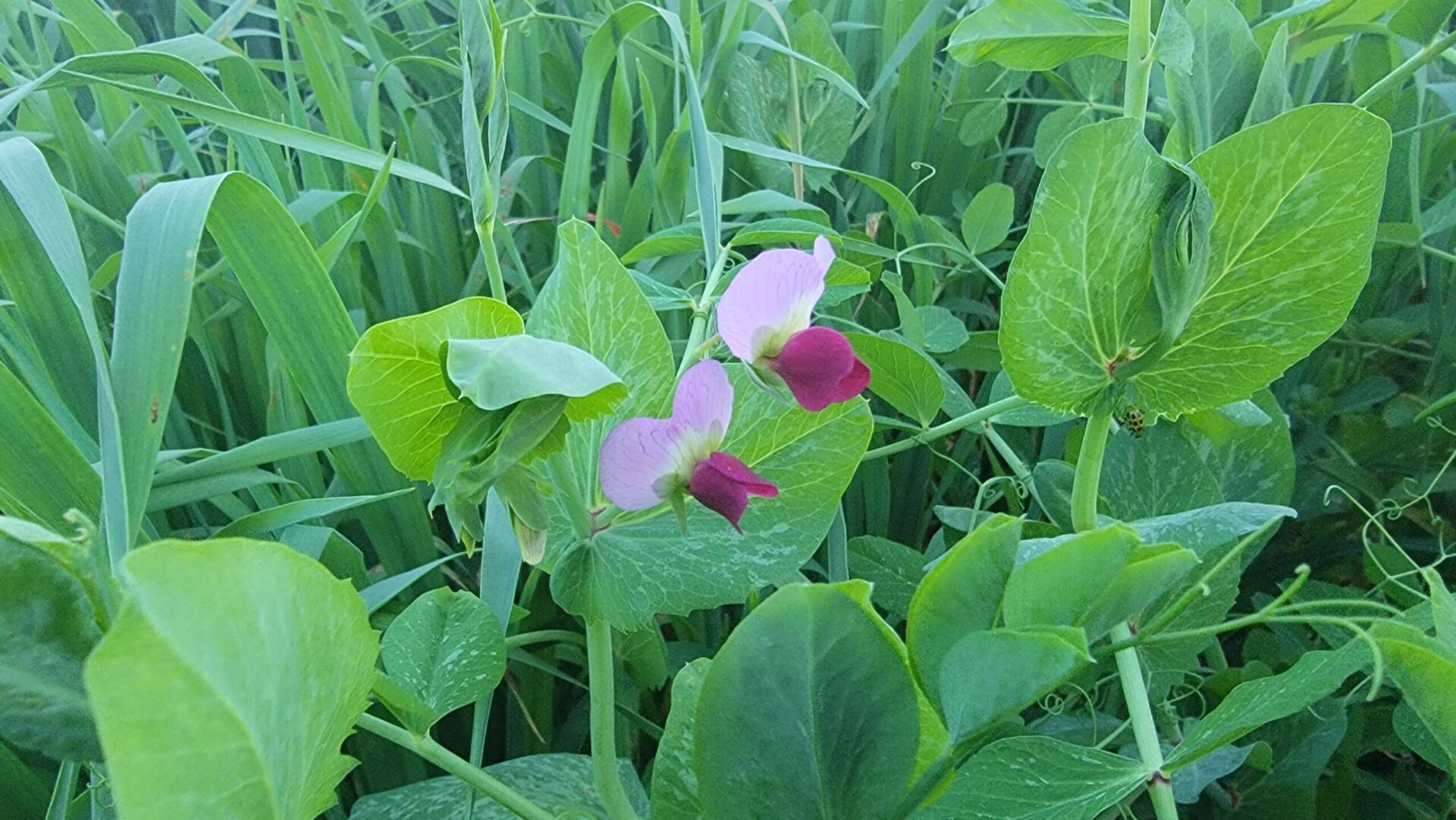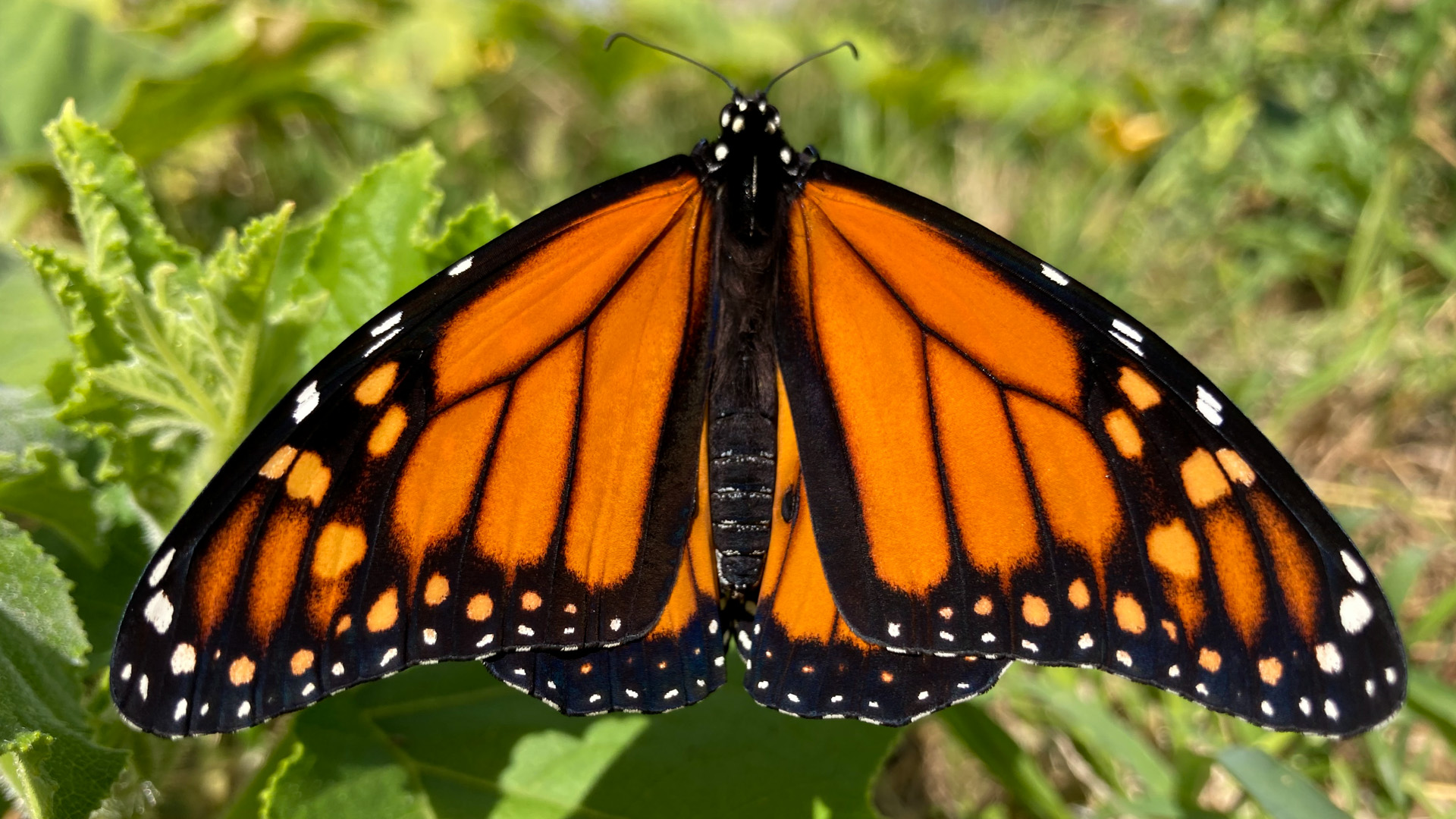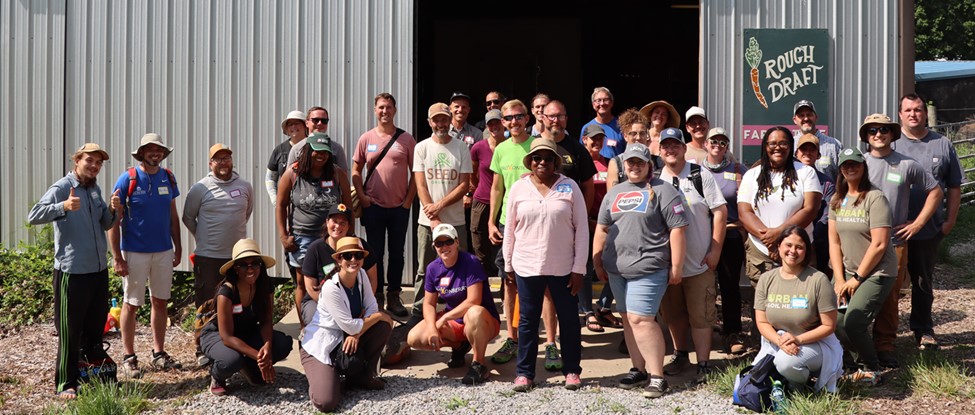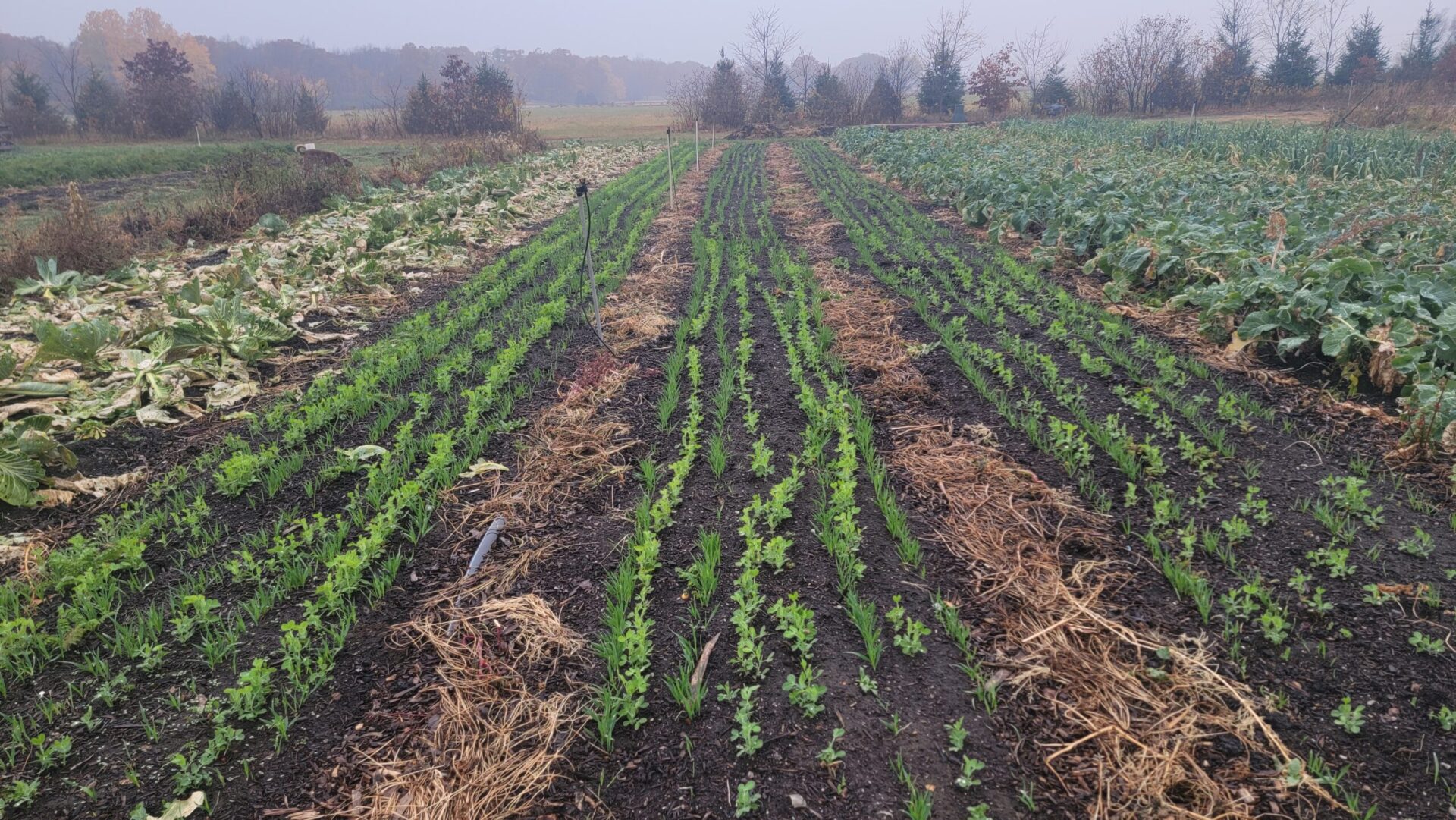
Soil Health
The SWCD provides technical assistance, educational opportunities, and conservation planning for urban farmers and gardeners on practices that build soil health and improve water quality. Our work in urban agriculture is in partnership with the USDA-Natural Resources Conservation Service, to be a local and statewide resource in advancing sustainable agriculture.
Growers are encouraged to contact the SWCD for technical assistance on conservation practices and soil health management. The Soil Health Specialist provides one-on-one assistance, educational webinars, on-the-ground workshops, and access to technical resources. The Marion County SWCD’s soil heath initiative also assists the USDA-NRCS and the Indiana Conservation Partnership with training and adapting technical standards and programs to urban agriculture.
Staff: Kevin Allison, Soil Health Specialist
In partnership with Marion County SWD staff, board, USDA-NRCS Indiana, Urban Soil Health, the Indiana Conservation Partnership, and fellow growers and gardeners.
This work is supported by the USDA-Natural Resources Conservation Service.
The USDA-NRCS is an equal provider, employer, and lender.
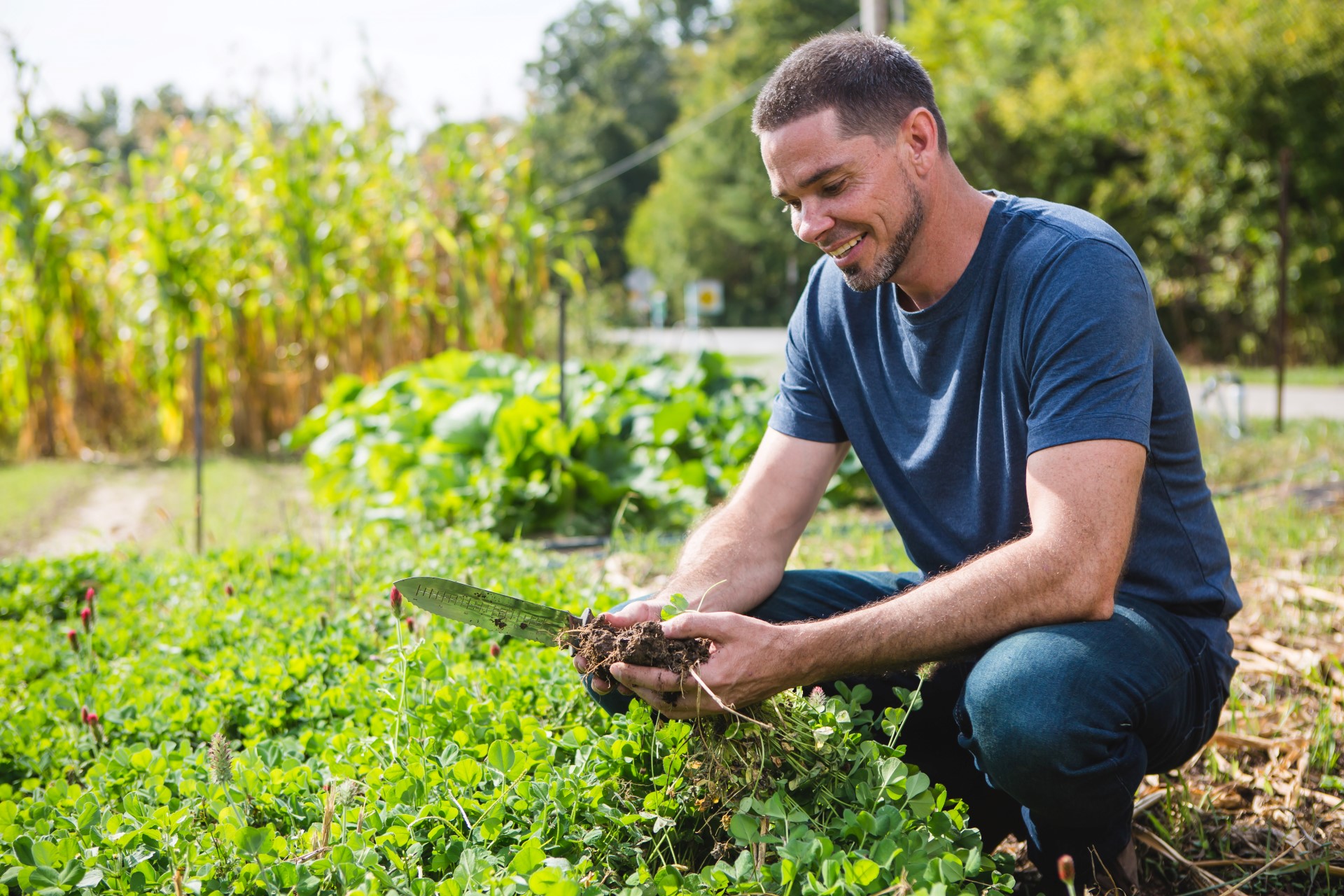

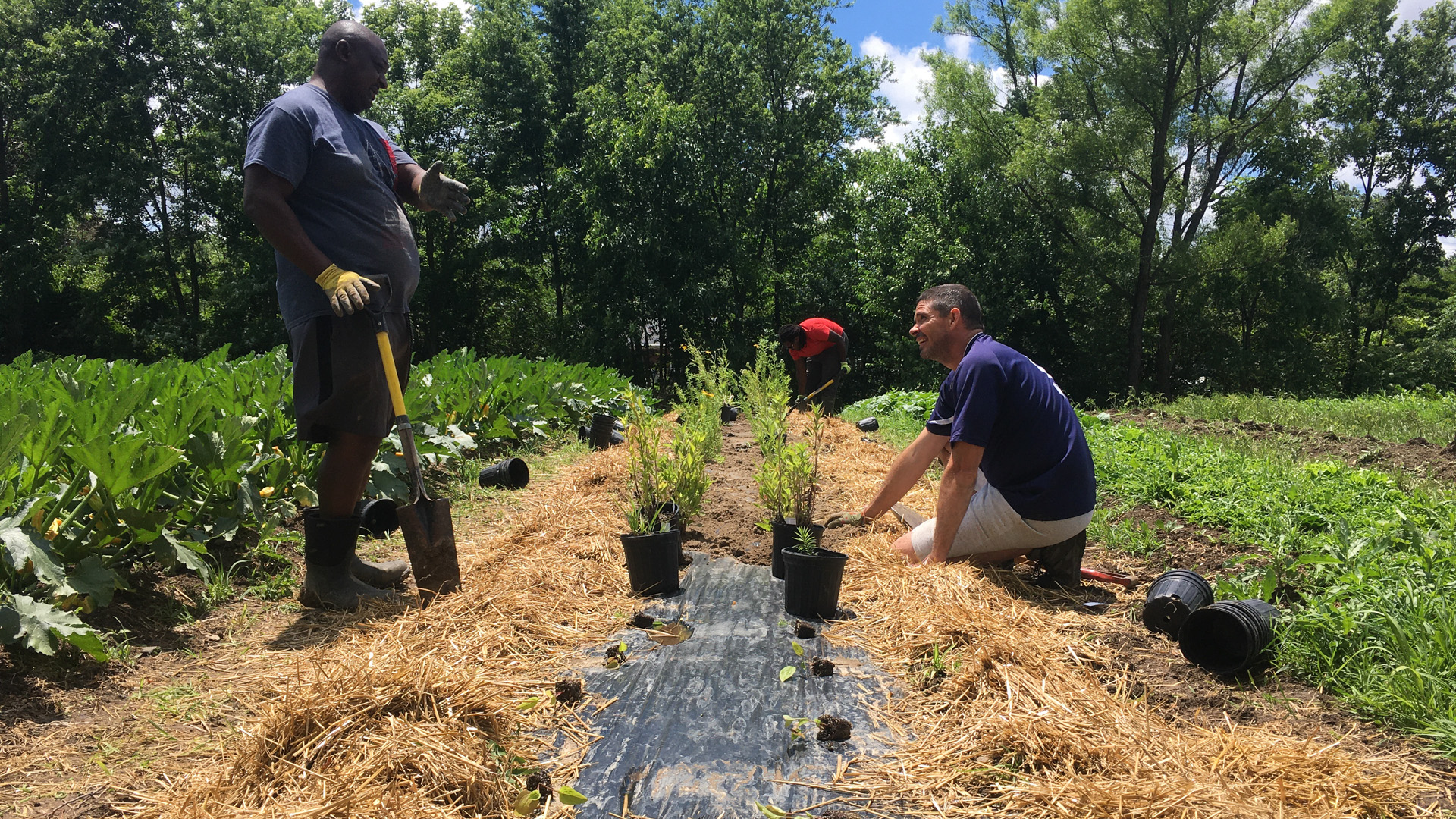 ‘
‘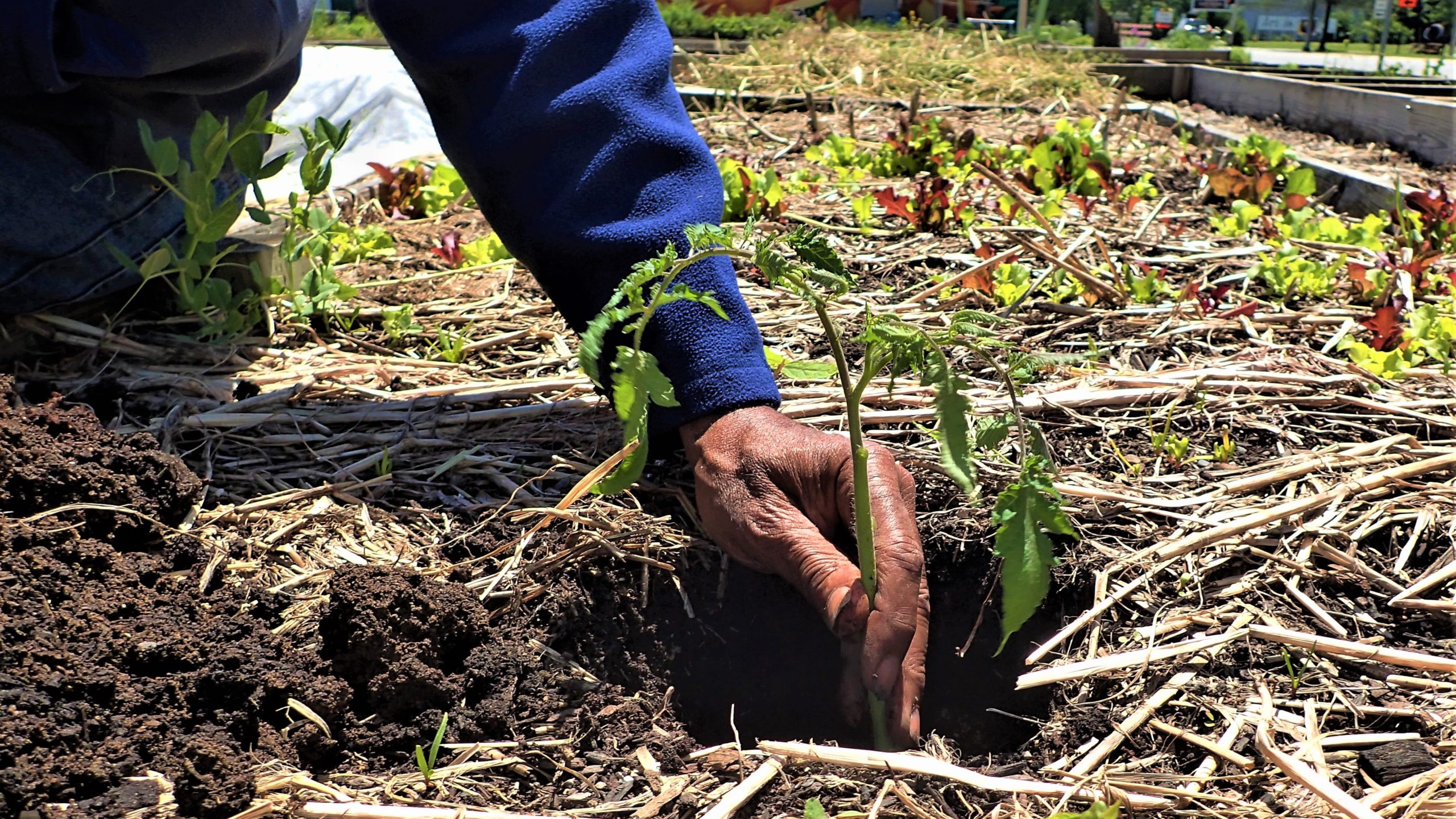
Our educational vegetable garden incorporates crop rotation, cover crops, mulching, minimal soil disturbance, nutrient management, and wildlife plantings for beneficial insects and pollinators.
Contact us if you wish to schedule a garden visit or tour and stay connected with our newsletter and events page for hands-on workshops. The garden is located along Eagle Creek Trail within the Mayor’s Garden at West 56th Street and Reed Road in Indianapolis.
See this MAP for directions.
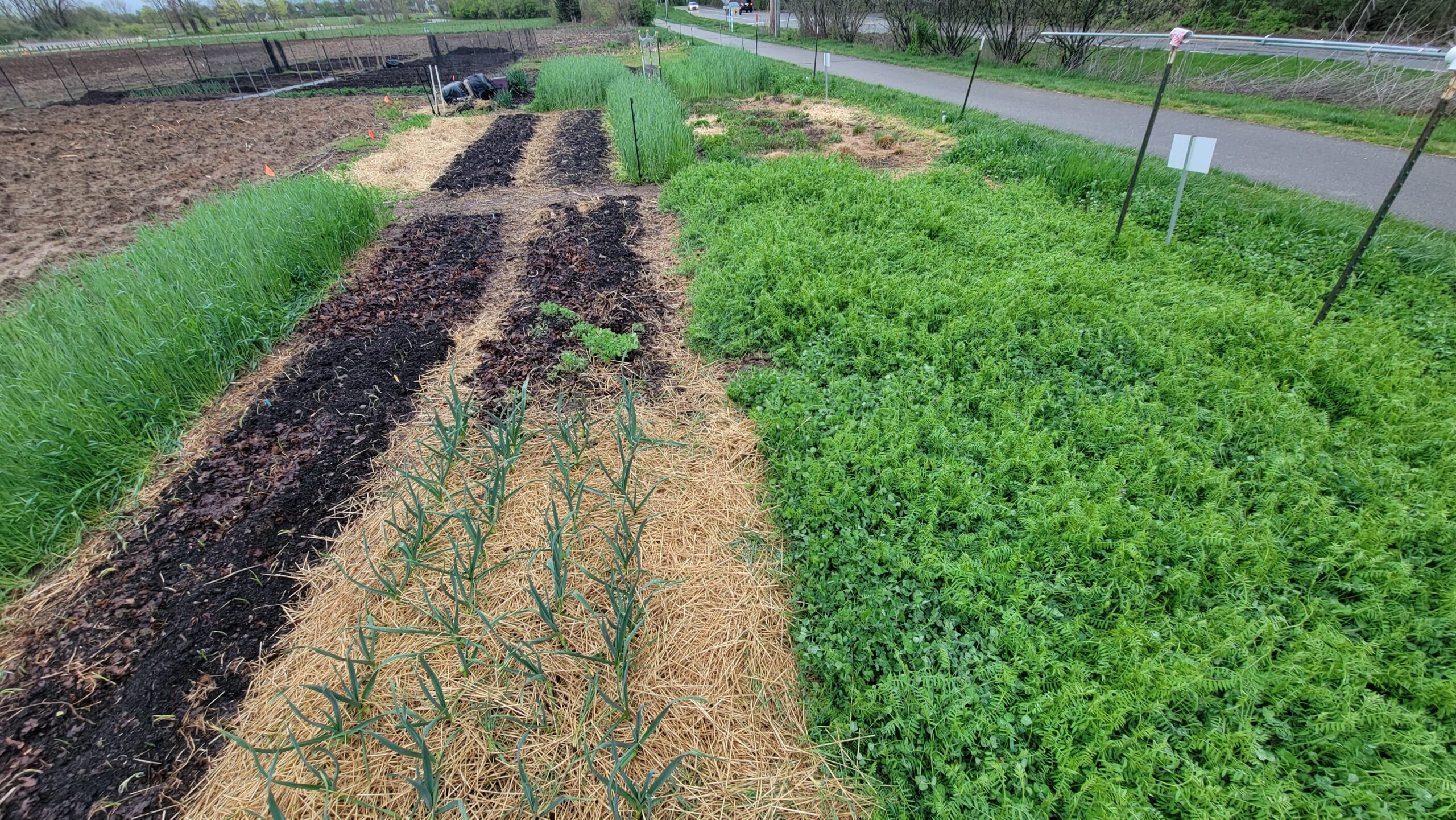
Our Soil Health Program is currently funded through a cooperative agreement with the USDA-Natural Resources Conservation Service. As we continue our service journey forward, we can strengthen our program with the help of non-federal contributions to our program. Help us as we help people grow healthy food and navigate the challenges and opportunities of urban environments and small-scale sustainable agriculture.
Consider donating to the Marion County Soil and Water Conservation District.

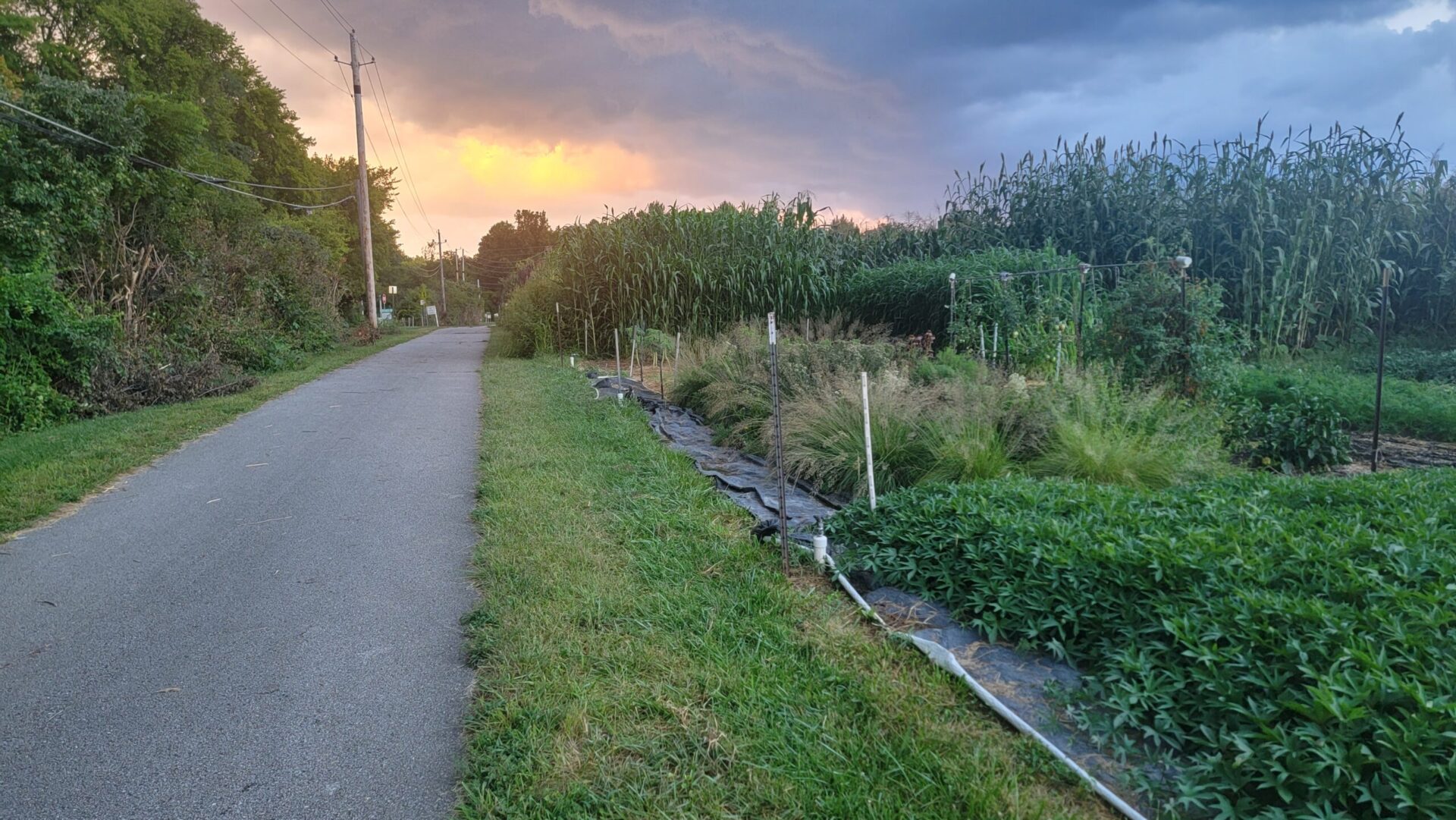
Soil Health Guide
The Soil Health Guide provides resources on soil health practices for small farms and gardens. Conservation in agriculture improves soil health, plant health, nutrient efficiency, and the soil’s ability to infiltrate, store, and clean water. We hope these resources are an asset to growers and conservation partners.
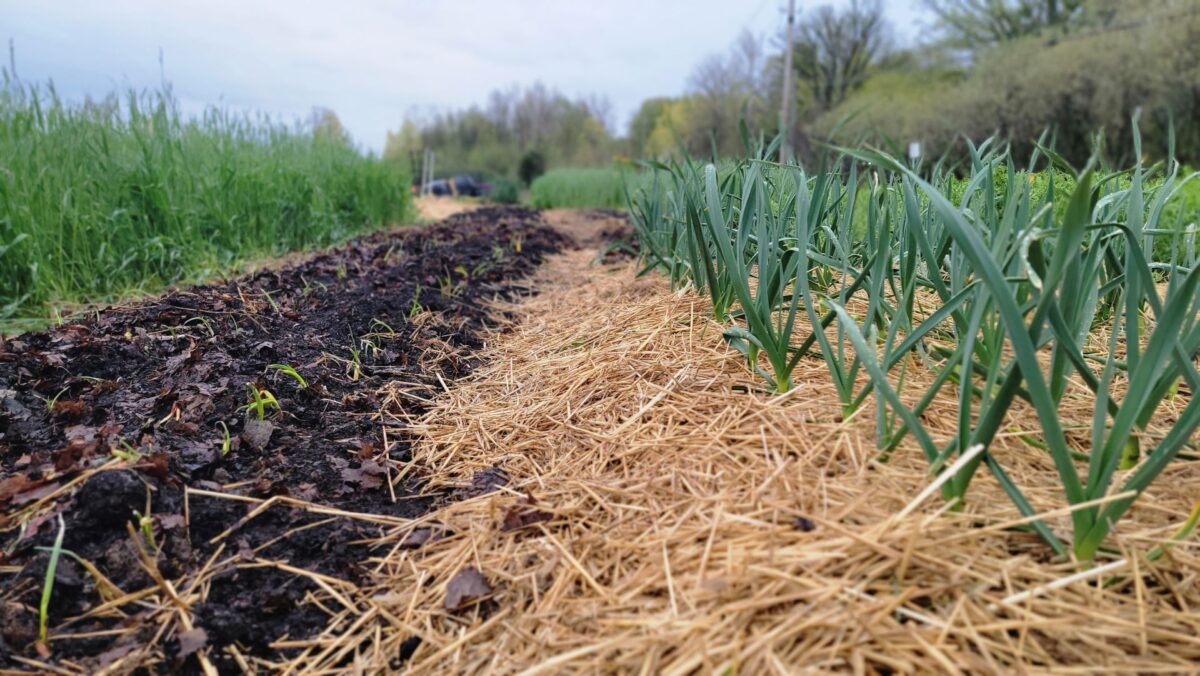
To create healthy gardens, we start with soils. The soil health system aims to mimic nature in the way we grow food.
Soil health is “the continued capacity of soil to function as a vital living ecosystem that sustains plants, animals, and humans.”
Soil health is protected and enhanced by creating the conditions in the garden or farm for natural biological processes to occur. In natural (ecological) systems, organic matter is maintained, water conserved, nutrients cycled, and biological activity thrives.
The soil health system is founded on 4 core principles, which motivate specific conservation practices.
- Minimize Disturbance – Disturb the soil as little as possible.
- Maximize Soil Cover – Keep the soil covered as much as possible.
- Maximize Biodiversity – Using crop rotation and cover crops.
- Provide Continuous Living Roots – Keep plants growing throughout the year.
When growers are practitioners of the 4 principles of soil health, there are many positive results. Soil health benefits people and the land. Key improvements include:
- Increased plant health
- Increased plant productivity
- Increased soil organic matter
- Increased soil water-holding capacity
- Increased soil aggregate stability
- Increased water infiltration
- Improved nutrient use efficiency
- Enhanced and diversified soil biology
- Reduced weed pressure
- Reduced pest pressure
Conservation and soil health practices help put the 4 principles into action!
- Crop rotation
- Compost
- Cover crops
- Mulching
- No-till & Reduced-till
- Nutrient management
- Native and targeted plantings for beneficial insects and pollinators
- Irrigation Management
- And more
The guide includes resources developed in partnership with the Indiana USDA-Natural Resources Conservation Service, the Marion County Soil and Water Conservation District, and Indiana’s Urban Soil Health Program. It also contains links to important resources from additional organizations and extension services. Some resource links are directed to the Indiana USDA-NRCS Field Office Technical Guide (FOTG),
The results of soil health practices can vary based on soils, climate, weed pressure, and other factors in the garden. Contact your local SWC or USDA-NRCS office for assistance.
The USDA is an equal opportunity provider, employer, and lender.
- Purdue Extension Gardening Bulletins
- Indiana Vegetable Planting Calendar (HO-186-W)
- Home Gardener’s Guide (HO-32-W)
- The Fall Vegetable Garden (HO-66W)
- And many more!
- Midwest Vegetable Production Guide
- ISDA & Purdue University – Indiana Fruit and Vegetable Harvest Calendar (pdf)
- SARE Crop Rotation on Organic Farms (book and online) – Helpful charts and guidance to help growers plan crop rotations.
- Marion County SWCD Demonstration Garden Crop Rotation Template – This is a google sheet containing the crop rotation of the SWCD demo garden. This crop rotation can be downloaded and adjusted to fit your own garden, crops, and context.
- Indiana Cover Crop Tool for Small Farms and Gardens – Conservation spreadsheet tool to assist with designing cover crop seed mixes for small-scale areas and determine seeding rates.
Google Sheets Version – (MCSWCD)
Microsoft Excel Version (Indiana-NRCS Field Office Tech Guide)
Training Video Part 1: Indiana Cover Crop Tool (YouTube)
Training Video Part 2: Indiana Cover Crop Tool Webinar, August 2024 (Youtube)
- Indiana Cover Crop Overview (pdf)
- Indiana Cover Crop Seeding Methods (pdf)
- Indiana Cover Crop Termination (pdf)
- Indiana Cover Crop Table for Small Farms and Gardens (pdf)
- Marion County SWCD Favorite Cover Crop Mixes (pdf)
- Oats and Field Peas for Early and Mid Spring Crops (pdf)
- Oats and Legumes for Kale and Spring Brassicas (pdf)
- Oats Tech Note (pdf)
- Crimson Clover Tech Note (pdf)
- Indiana Mulching Tool for Small Farms and Gardens – This spreadsheet tool assists conservation planners, farmers, and gardeners in planning mulching on small farms and gardens.
Google Sheets Version
Microsoft Excel Version (NRCS-IN Field Office Tech Guide)
Training Video – Indiana Mulching Tool, August 2024 (Youtube)
- Indiana Mulching for Small Farms and Gardens (pdf – NRCS Field Office Tech Guide) – Technical document that provides details on mulching, types of mulches, and their uses on small farms and gardens.
Coming soon
- Indiana Nutrient Management Tool – NEW! Excel-based calculator to assist with soil test records, fertilizer recommendations and application rates of fertilizers, compost and other fertility products for the more commonly grown vegetables and produce found in Indiana.
- Nutrient Management Plan for Organic Systems – Excellent resource and tables for amendments, composts, and manures. This guide was created for the western states, but the information can be valuable for Indiana growers.
- Nutrient Recommendations for Vegetable Crops in Michigan – A great resource from our neighbors to the north
- Michigan State University – Fertilizer Recommendation Program – Enter soil test data and obtain fertilizer recommendations
- Tarping, Cornell University
- Bulletin #1075, Tarping in the Northeast: A Guide for Small Farms, University of Maine, New Hampshire, and Cornell
- Marion County SWCD List of Tarp Sources
- USDA-NRCS High Tunnel System
- USDA-NRCS Low Tunnel System
- Purdue University HO-296 Indiana High Tunnel Handbook – This resource describes: selecting the right size and type of high tunnel for your operation, choosing a site location, constructing a high tunnel, determining planting dates, laying out beds, spacing plants, understanding environmental factors, monitoring soil health, and managing pests and diseases.
- Scheduling Fall and Winter Vegetable Production HO-330 – This publication provides abundant, detailed guidance on scheduling vegetable crops for winter high tunnel production. It includes a fillable scheduling form, a planting date scheduling guide, two scenarios with revenue projections, and charts and figures covering six crops. It aims to help farmers improve quality and yield and help them better match production and market demand.
- Managing Environment in High Tunnels for Cool Season Vegetable Production HO-297 – In a high tunnel or hoophouse, vegetable growers can influence three crucial factors: light, temperature and relative humidity. In this publication, Purdue Extension experts discuss practical suggestions for managing the environment in high tunnels used for cool season production in the Midwest.
- SWCD High Tunnel Supplier List
- USDA-NRCS Indiana Irrigation Water Management Plan for Small Farms and Gardens
- Water Recommendations for Vegetables, Utah State University
- Irrigating Vegetable Crops, UMass Extension Vegetable Program
- Vegetable Seed Germination and Emergence, Bayer Agronomic Spotlight
- Marion County SWCD: “Native Plantings for Beneficial Insects and Pollinators”
- Marion County SWCD: “Insect-Management” info and resources
- Purdue Extension: “Recommended Indiana-Native Plants for Attracting Pollinators”
- Indiana Native Plant Society (INPS)
- Indiana Native Plant Society – Where to Buy Native Plants
- Xerces Society: Farming with Native Beneficial Insects (book) – A discussion on the ecology of beneficial insects and how to increase their numbers through conservation strategies.
- Xerces Society: “Pollinator Plants Midwest Region”
- Xerces Society: “Checklist of Actions to Promote Pollinators in Yards, Gardens, and Parks”
- USDA Natural Resources Conservation Service: Plants database
- Missouri Botanical Garden: Plant Finder
- Plant calculator: determine spacing for a plug planting
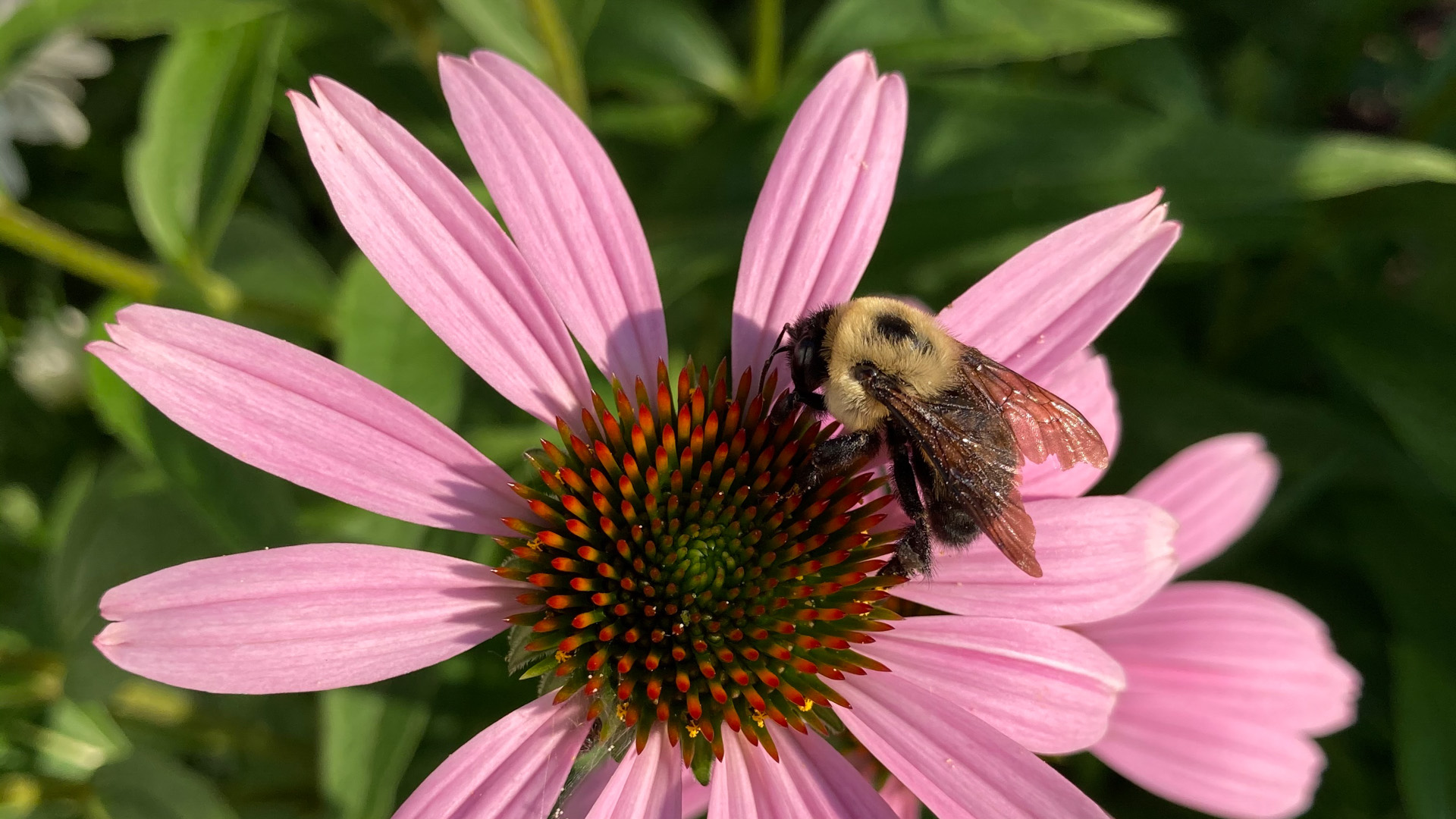
Insects are important to soil health and growing food. Soil engineering insects help create soil structure that is stable for water and nutrients. Decomposers eat organic material and unlock nutrients. Pollinators help many crops reproduce and yield fruits and vegetables. Then there are the pest controllers. These beneficial insects serve as natural enemies to pests and help suppress their populations through predation and parasitoidism. The paper wasp (above) and aphid wasp (below) are great examples of insects that keep pests at bay.
There are an estimated 5 million insect species. Of these, it is just a handful that happen to cause issues in the garden. In fact, insects can come in very handy when growing crops. Here are some resources that can help you manage them.
Our Favorite Resources
- Marion County SWCD – Native Plantings for Beneficial Insects and Pollinators
- Marion County SWCD – Wildflowers for Beneficial Insects
- Marion County SWCD – Beneficial Insects for Fruit and Vegetable Growers
- Purdue Extension – Entomology – Vegetable insects and their management
- Purdue Extension – Entomology – Fruit insects and their management
- Purdue Extension – Entomology – Pollinator Protection
- Purdue Extension – Entomology – Vegetable Insects E-65-W
- Purdue Extension – Entomology – Vegetable Insects: Managing Insects in the Home Vegetable Garden
- Purdue Extension – Entomology – Common Name and Order of 50 Insects
- Purdue Fruit & Veg IPM on Facebook
- Purdue Extension Plant and Pest Diagnostic Laboratory – The Purdue University Plant and Pest Diagnostic Laboratory works to diagnose plant diseases and identify insects, plants and weeds and other plant and pest problems. Fees may apply.
- Resource Guide for Organic Insects and Disease Management – This is a great all-around guide for insect management on organic farms and gardens from Cornell University.
- eOrganic – Insect Management in Organic Farming Systems – This website, hosted by Oregon State University, contains an excellent list of links and videos.
- ATTRA – Insect Management Publications
- Xerces Society – Beneficial Insect Scouting Guide
- Xerces Society – Habitat Planning For Beneficial Insects / Guidelines for Conservation Biological Control
- Xerces Society – Beneficial Insect Habitat Assessment Form and Guide
- SARE – A Whole Farm Approach to Managing Pests
- SARE – Cover Cropping for Pollinators and Beneficial Insects
- SARE – Identification Key to Major Beneficials and Pests
- Midwest Vegetable Production Guide for Commercial Growers (ID-56) – Current pesticide information.
- DriftWatch and BeeCheck
- Pollinator Partnership: Bee Friendly Farming
Don’t forget that one of the keys to insect management is in the soil. Adequate plant nutrients and soil moisture, including favorable soil pH and healthy soil, can reduce plant stress, improve plant vigor and increase the plant’s overall ability to tolerate pests. Soil Health = Plant Health.
Consider following the PAMS method as a foundation for your insect management strategy.
- Prevention – Activities such as cleaning equipment and gear when leaving an infested area, using pest-free seeds and transplants, using exclusion netting, and irrigation and watering scheduling and methods to limit situations that are conducive to disease development.
- Avoidance – Activities such as maintaining healthy and diverse plant communities, using pest-resistant varieties, and crop rotation.
- Monitoring – Activities such as pest scouting and weather forecasting to help target suppression strategies.
- Suppression – Activities such as the judicious use of cultural, mechanical, biological, and chemical control methods that reduce or eliminate a pest population or its impacts while minimizing risks to non-target organisms.
- IUPUI Center for Urban Health – Resource for Soil Testing Lead
Soil Health Systems and Organic Resources
- Carbon and nitrogen C:N (pdf) – Helpful in understanding carbon to nitrogen ratios in cropping systems
- ATTRA Sustainable Agriculture (link) – Information on various topics, written by sustainable agriculture specialists
- Rotational no-till and mulching systems for organic vegetable farms (webinar) – Excellent webinar by Jan-Hendrik Cropp
- Soil health background (NRCS)
Climate
Permaculture, Food Forests, and Agroforestry
- NACD Permaculture Report (pdf) – Marion County SWCD & Williams Creek Consulting – Design templates for urban lots
- University of Missouri – Center for Agroforestry (link)
- USDA National Agroforestry Center
